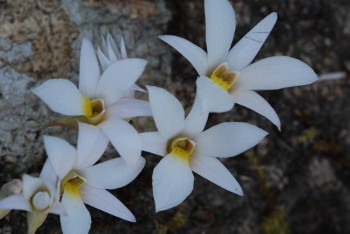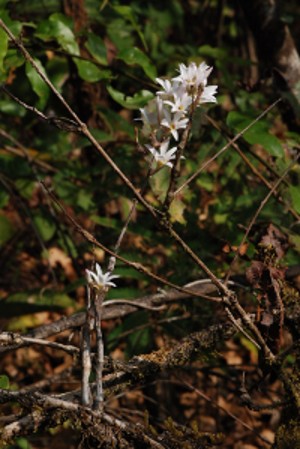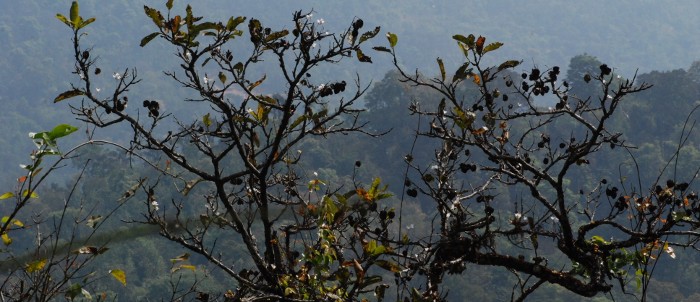Species of the Month – February 2014
Dendrobium barbatulum Lindl.
synonyms: Callista barbatula (Lindl.) Kuntze, Dendrobium barbatulum Wight
Dendrobium barbatulum is an epiphytic herb commonly seen in many parts of the Southern Western Ghats in India. This species usually flowers in the winter months of January-February. All the leaves would have dried by the time it starts giving out new  inflorescence and when it flowers it flowers profusely.
inflorescence and when it flowers it flowers profusely.
The flowers are white and once open flowers last for around two weeks. Though the plant itself is not very big and has shorter canes the flower are quite big, sometime reaching a width of 4+cms. The racemes are lateral.
This species loves bright sunlight. One can always find the plant on branches open to wind and bright sunlight. With dried sheath covering the cane plant does not appear active until a new shoot starts.
 Plants are perennial, and the new growth is very susceptible to water. It takes only a little amount of watering during a “wrong” time is enough to kill the new growth. Like all dendrobiums, one thing to keep in mind is that never to over water and never water when its giving out new shoots (wrong time) Also good amount of sunlight must be provided.
Plants are perennial, and the new growth is very susceptible to water. It takes only a little amount of watering during a “wrong” time is enough to kill the new growth. Like all dendrobiums, one thing to keep in mind is that never to over water and never water when its giving out new shoots (wrong time) Also good amount of sunlight must be provided.
Though the flowers are attractive and many it is not found much in cultivation. Habitat destruction due to various reasons is one one of the main reasons for decline of the orchid species. This is true for not just this particular species, but it is true for all other species both orchids and non-orchids alike.
Article by : Ravee Bhat

Thank you for this useful info. I found it very interesting & helpful. Have a nice day 😃 -Marelous
I have seen this flower before it seems. The plant was nearly four feet in height and nearly dried up. The flowers were pinkish white. I don’t have the photograph right now as I had very simple mobile camera in use. It was nearly 10 to15 years ago. Location was Khemase reserve forest, near Koyna Dam and now a part of Chandoli Reserve Forest. It was located on a rocky plateau amidst the jungle. More photos may help me with the identification. Thank you.